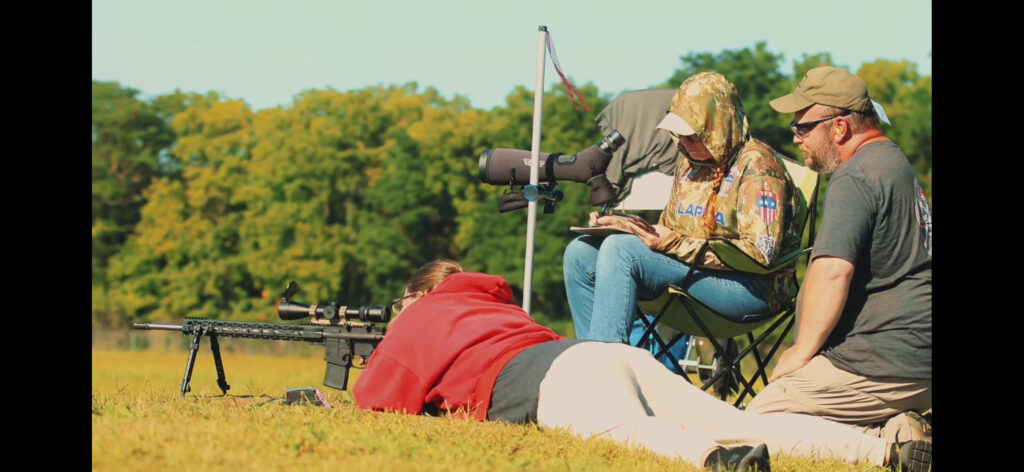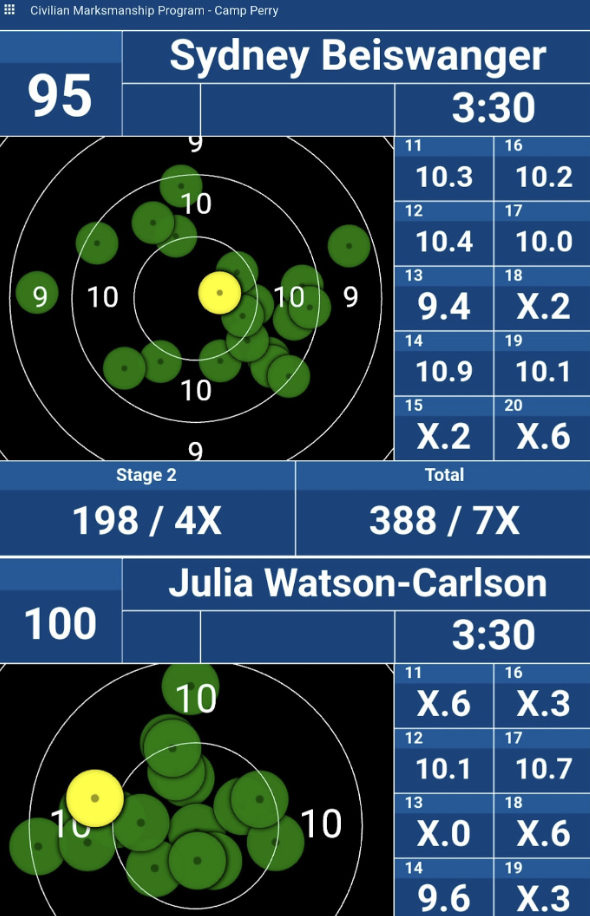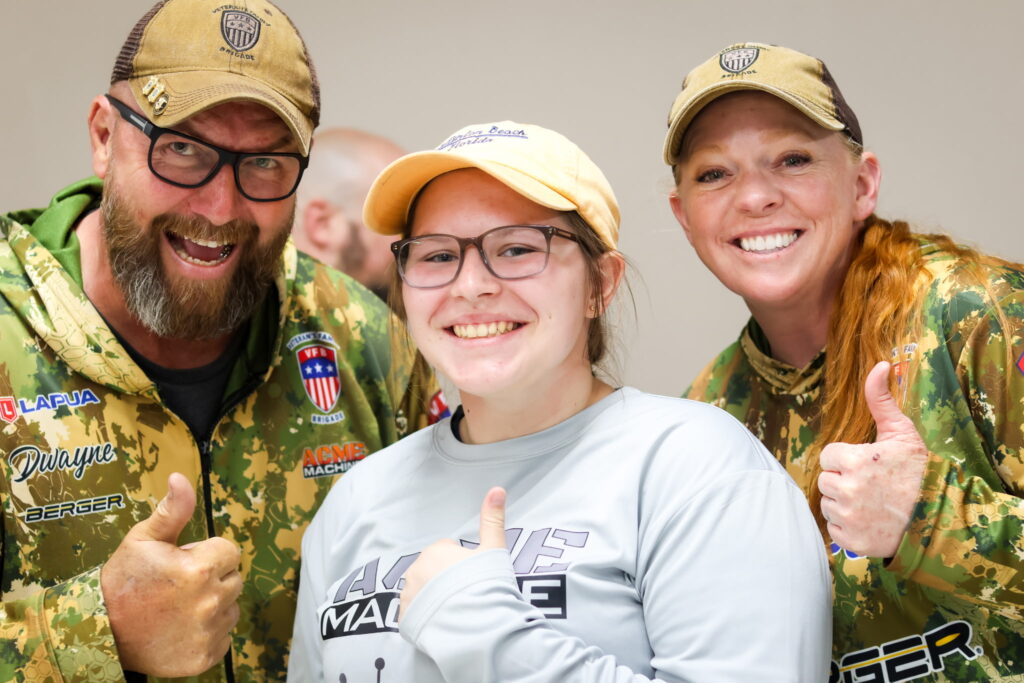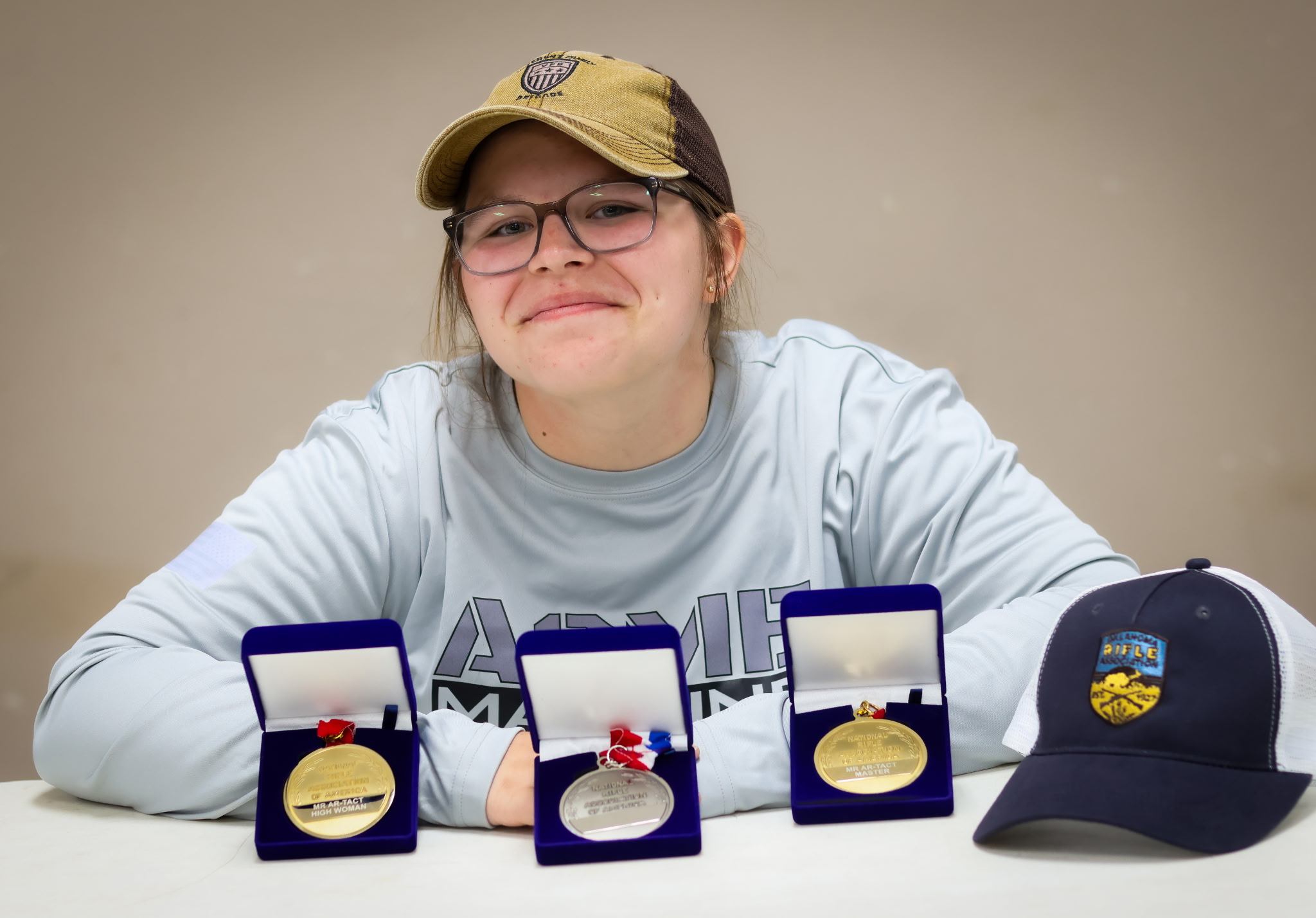I’m Sydney Beiswanger and I’ve been shooting since I was seven years old. My shooting started off inconsistent, but it’s grown to become a big part of my life. I would shoot a 22 bolt action rifle at steel targets while sitting on a bench. Since my dad, Shaun Beiswanger, is the founder of ACME Machine, where they manufacture ACME Rifles, I got comfortable around firearms from a young age and benefited from the knowledge surrounding them. About three years ago, we met the Veterans Family Brigade, the VFB, who are a group of retired, national champion veterans who continue to stay active in this sport and teach younger generations of shooters. Along with help from my dad, I got the majority of the information I know about shooting from being coached by the people in the VFB, such as, Dwayne Lewis, Julia Watson Carlson, Jonathan O’Neal, and Daniel Duitsman.
My first match was last year, 2024, in Camp Perry at Small Arms Firing School, SAFS, where I learned the fundamentals of marksmanship, match course of fire, and the service rifle positions. SAFS is focused on the basics and safety for people new to shooting. It prepared me for the day after, when I was going to shoot the EIC match. EIC means Earn Excellence in Competition, and it was iron sights and service rifle. I didn’t have the right gear, so it was something I wanted to leave and revisit. Then, I shot Midrange. It was my first time shooting AR-Tactical, and I shot a 198/200 on the first day at 600 yards. That match is what started my passion for AR-Tactical.
AR-Tactical is shooting your rifle prone, with a bipod, and with a rear bag. My dad explains AR-Tactical as, “A shooting discipline that offers shooters an opportunity to safely be introduced to long range marksmanship with AR-15 platform style rifles. If the shooter decides to transition to service rifle or other types of shooting, these marksmanship skills from AR-Tactical can be applied there as well.” In other words, AR Tactical can be used as baby steps to get into more challenging types of shooting.
This year, I shot AR-Tactical in the Oklahoma City Nationals along with about 20 other juniors. In comparison to the Camp Atterbury Nationals last year, there were only two juniors, including me. My dad had promised to bring more juniors, and he did. He brought the juniors to the Oklahoma match and, along with the VFB, taught them some basics of marksmanship. A course of fire is basically a schedule of at what distance and how many scored shots you’re going to shoot. At each distance, you shoot a match of 20 rounds for record plus 2 sided shots. As an example, the course of fire for the first day was 300 yards, 500 yards, 600 yards, and 600 yards again. The second day was the same as the first day, and the third day was four 600 yard matches. On the fourth day, we had a team match at 300, 500, and 600 yards.
To start a match, I first take my mat, rifle, and ammo to my firing point. If the host range has electronic targets, then I will log onto the website on my iPad and take that as well. I will get on the gun and verify my target, get a sight picture with no shadow, make sure I’m on my target when I relax, and get comfortable. Then, the range officer will tell us we’re in our preparation period, a 3 minute period where you can take out your empty chamber indicator, commonly known as ECI, and dry fire.
When the preparation period is over, I start my shooting process. I load a bullet, aim, and then hold the trigger to the rear. Holding the trigger to the rear is important because when you move your position while the gun is recoiling, then the trajectory of the bullet will change, that’s called following through. The same goes for a cheek weld and any tension in your body. After I shoot, I’ll look where the bullet hit and ask myself if that’s where the shot broke, if the wind would have affected the bullet, and if I followed through. If so, I will make scope adjustments/favor, fix my position, or wait for a better condition. Now, I repeat that until the match is over.
Before I knew it, it was time for awards. At first, I didn’t think I would win any medals, but I was happy about the fun I had. I was 4th place in the final aggregate with a score of 2,368 with 101x out of 2,400, which was 9 points from first place. I won my master’s classification, 2nd highest junior, and high woman. I got a standing ovation and took pictures. This moment motivated me and made me -want to push to get better and do even more. After receiving so much praise from my mentors and peers, I was overwhelmingly proud.
So, if you’re thinking about getting involved, you might as well try it. To get involved, you can sign up for local matches and talk to people. The Civilian Marksmanship Program has multiple opportunities for you to get started.
Check out ACME Rifles Marksmanship: https://www.acmerifles.com/marksmanship/
Check out Veterans Family Brigade: https://www.acmerifles.com/veterans-family-brigade




Read the full article here




